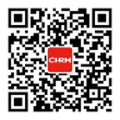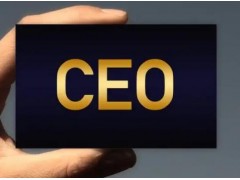Introduction
Every manager, no matter what their role, knows that exceptional employee performance is critical in today’s world. The purpose of this white paper is to discuss the need for human resource managers to move beyond HR’s traditional performance management approaches and partner with line managers in removing the barriers to exceptional employee performance that tend to exist in organizational work environments. Specific methodology and action steps are discussed and suggested readings are provided.
How can we Achieve Exceptional Employee Performance?
The first thing to remember is that employee performance does not occur in a vacuum. We have to take a systems perspective and look not only at our employees, but look as well at the environments in which we expect them to perform. It has been said that if we put good performers in bad systems, the systems will win every time. We know that behavior in any facet of our lives is a function not only of the person, but of the environment-more specifically, of the interaction of the person and the environment. Behaviors at work then, are a function of the interaction of our employees (with their person factors) and the work environment (all the organizational systems factors). And it is behaviors that lead to performance.
Depending on whose perspective you choose to believe, as many as two-thirds to four-fifths of the causes of employee performance problems are attributable to the work environment, not the employees. If this is true-in fact if it is only partially true-then one answer to the above question is clearly, "Fix the systems in which our employees work!"
Yesterday’s Solution: Fix the Employees
Yesterday’s solution to the issue of employee performance was simple. "Fix the employees!" The focus was on the immediate problem and the solution was either training or discipline.
As we grew a bit more sophisticated we became more proactive and got ahead of the curve by instituting performance management systems, which often provided for goal-setting and performance appraisal processes that would provide a more rational and defensible basis for training and discipline. We also implemented career planning and development systems, which gave us more of a future focus, and changed the name of the Training and Development function to Human Resource Development to reflect the broader scope. These were good things as far as they went, but they are not enough. All this was still based on the premise that the solution was to fix the employees.
Today’s Solution: Recognize Some of the System Factors as Well
Today, we are generally doing a better job. We recognize and deal with most of the "hygiene factors"-fair pay, reasonable benefits, clean and safe working conditions, etc. These are important. There is no question that they are necessary for improving employee performance, for fairly obvious reasons. To use simplistic examples, employee performance improvement interventions may not stand much of a chance if employees are really annoyed because we did a poor job of implementing a benefits change, or if they are preoccupied with work schedules they consider unfair.
We have also recognized that we have to consider the whole person. We know that people don’t "leave their problems at the door." We understand that when we hire someone, we get the whole person, including problems from their personal life-from the person’s external system. This is an area we’re getting much better at-in terms of counseling, fitness programs, child care, employee assistance programs, etc. Recent years have seen company concierges and other innovative approaches to helping employees deal with the conflicts in their work and personal roles.
This is a big step beyond yesterday’s solution of fix the employee with training or discipline. The competency areas currently tested by the Human Resource Certification Institute (HRCI) reflect this broad area of knowledge. These areas truly are a critical foundation for improved employee performance, but they are also not enough. We must do more. We are looking at personal systems factors outside of work as they impact employees, but still not looking hard enough at the system factors at work.
Tomorrow’s Solution: Deal with the System Factors in the Work Environment as Well
A relatively simple, but highly effective way of looking at this issue was provided by Tom Gilbert, who developed a diagnostic tool called the Behavior Engineering Model (BEM). There are other approaches (see the recommended reading at the end), but the BEM will serve as a good example. It looks at the following six areas:
1. Information
2. Resources
3. Incentives
4. Skills and knowledge
5. Capacity
6. Motivation
The first three areas, information, resources, and incentives, represent the work environment (system factors), and should be looked at first. We need to ensure there are no problems in these areas before we rush to fix the employees, who are represented by the last three areas, skills and knowledge, capacity, and motivation (person factors).
Let’s look at each of these in a bit more detail. Information is critical for obvious reasons. It starts with output specifications. People have to know what they are expected to produce. They need to get feedback. They need to be aware of policy and procedures and the reasons for these policies and procedures, and so on. Resources, again, is fairly obvious. No matter how skilled an employee, without the tools and materials (and information can overlap with resources here) needed to do the job, it probably isn’t going to get done. The best welder in the world can’t weld without a torch. The issue of incentives is a bit more complex, but boils down to this. In the work environment, are there truly incentives for good performance and truly consequences for poor performance? Often, we end up, in effect, punishing our best performers. They get all the tough jobs because we know we can count on them and the poor performers get the easier work. "Skills and knowledge" is certainly a familiar area. People have to know how to do their jobs. Capacity is important for obvious reasons also. No matter how committed the employee, if we hire someone 5’ 10" to guard an NBA center in the low post, he isn’t going to get the job done. Motivation is important also. A strictly person-based definition of performance is that performance is a function of motivation and ability. We can work on the ability. It’s harder to work on motivation because it is so internal to the individual, but we can work on the environment and make sure we remove the barriers to performance. Gilbert also developed a list of questions he called the PROBE questionnaire, to help determine in which of these areas the cause of an employee performance shortfall could be found.
How well do we currently address these person and system factors in HRM? If we have done all the things we currently teach that we should (today’s solution), then we probably do fairly well in the person factors-skills and knowledge, capacity, and motivation. We may have a corporate university and provide excellent training for our employees, focusing on the skills that will be needed tomorrow as well as today. Our promotion and selection systems may be good enough to ensure that employee capacity is never an issue. The rewards, training (including well-trained supervisors or team leaders), and career focus may combine to help motivate our employees. But all this may not be enough if there are major problems in the system factors. This is not to say the system factors are ignored. We put a lot of effort into communications programs, and comfortable facilities, and tweak our compensation programs endlessly. But too frequently, this is not done with performance improvement in mind and does not result in high performance.
If problems persist in the work environment areas, exceptional performance will not be achieved. Our organizations have recognized this and have made various efforts over the past several years to deal with it-with varying degrees of HRM involvement. The productivity movement of the 1980’s, followed by the total quality movement (TQM), followed by reengineering and business process redesign (BPR)-these can all be viewed as efforts to improve the environment in which our employees function and improve employee and organizational performance. By whatever name, this effort is going to continue. The only issue is whether HRM is going to be a player, or it will be the province of outside consultants.
How can HRM be a Major Player in This Effort?
Once we are sure a solid basic HR foundation is in place, there are two more keys for HR organizations and HR Managers who wish to be key players in improving employee performance-and who wish to do more than provide the traditional HR solutions:
1. The first is to understand the methodology for diagnosing human performance problems and designing and implementing performance improvement interventions.
2. The second is to forge effective partnerships with line managers.
The methodology is not complex. But before the methodology can be used effectively, one must develop a mindset that recognizes that there are many solutions to employee performance problems other than training (Marilyn Westmas, of Rayovac, has developed a taxonomy of well over 200 performance improvement interventions). Then, we need an understanding of the methodology-a basic approach that is not all that different from that used daily by HR Managers in problem solving. Start with front-end analysis, determine the problem area, select, design and develop an appropriate intervention, implement (perhaps after a pilot) the intervention, and evaluate the results to determine if adjustments are needed. The critical point is that training isn’t always the appropriate intervention-we may need a job aid, an electronic performance support system (EPSS), more and better information getting to the people doing the work, or additional resources. Problems must be approached with a willingness to look at the whole work environment, and with a willingness not to walk away when it doesn’t appear the intervention needed is a traditional HR approach that we are comfortable with.
This last point is key to forging effective partnerships with line managers, team leaders, or self-managed work teams. There are tremendous opportunities for synergy when we combine the skills and perspectives of HR representatives with the people involved with the work on a daily basis. We have to be willing not to walk away when the solution appears to be outside the traditional HR area of expertise. Rather, we have to be true business partners, stay with the people with the problem, help find the expertise needed, and ensure that the solution is designed and implemented in such a way that it leverages our employees’ capabilities. We don’t have to be the subject matter experts in all intervention areas, but we have to understand the process. We need to be involved at all stages, and that will only happen if the people with the problem view HR as a function that has something to bring to the table in this regard. With that in mind, some action steps are offered in the next section.
What Specific Steps Should HR Take to Address the Remaining System Factors?
For larger HR organizations, it is critical to have the current T&D or HRD group make the transition from a training organization to a performance improvement organization. Those who now support various elements of the organization as trainers need to be exposed to performance improvement methodology, and most of all, need to be willing to look at human performance solutions other than training. It has been said that if you give a small boy a hammer, he will find an inordinate number of things that need pounding-and those of us who have raised small boys recognize the element of truth in that statement. We all tend to see problems in terms of our favorite solution-which is typically one we’re good at implementing-so our trainers may have to stretch a little. But some companies have already successfully made this transition. These staff members, in many cases, will already have good relations with those they support, but are seen just as trainers, not as professionals who can help diagnose a performance issue and help come up with interventions other than training. If HR is to be a key player in overall performance improvement, this is the impression that has to change. The transition begins to come when HR people are called in for training, see in their front-end analysis that training is not the answer, and, rather than bowing out, offer some other suggestions as to how to proceed.
In smaller HR organizations, this is tough, because HR is already stretched. The HR Manager already has to be all things to all people and here is one more area that he or she must become competent in. At the same time, if the HR Manager does not become knowledgeable in this area, get out of the office, and form the partnerships, he or she will leave the field to external consultants by default. If, on the other hand, the HR Manager does become knowledgeable, he or she can at least be in the position of working with the external consultants and helping to guide the process.
Large or small, in working with human performance issues, remember:
1. Develop an understanding of human performance improvement methodology.
2. Be willing to use all the available tools, not just your favorite. The tools are just tools. The goal remains performance improvement.
3. Be open to any and all approaches. The issue is what will work, not whether the approach is a typical HR solution. Maybe an internal person is the answer, maybe an external person is the answer, maybe an internal alliance is the best approach, or maybe a consortium of companies is needed to work on the issue.
4. Partner with line managers and those with expertise in using tools you are not familiar with. Build networks of people who can bring expertise to the table that you lack.
5. Don’t worry overly about what’s on your business card-whether it says "Training and Development," or "Human Resource Development," or "Performance Improvement," or simply "Human Resources." If you do the job, they will call you back, and if you don’t, they won’t-no matter what your card says.
6. Don’t get involved in turf wars with other parts of the organization who typically take a different approach. When you do, it simply makes you look foolish in the eyes of the rest of the organization. Rather, build strategic partnerships with others in the organization who may have something to offer so you can quickly bring a significant amount of expertise to bear on the problem.
7. Take a systems approach. No intervention exists in a vacuum, and every intervention has some impact beyond its area of initial application. Try to bring all those affected to the table. Don’t fall into the old trap of optimizing one part of the system while sub-optimizing the whole.
文章出处: HRoot 社区
 手机版|
手机版|

 二维码|
二维码|








